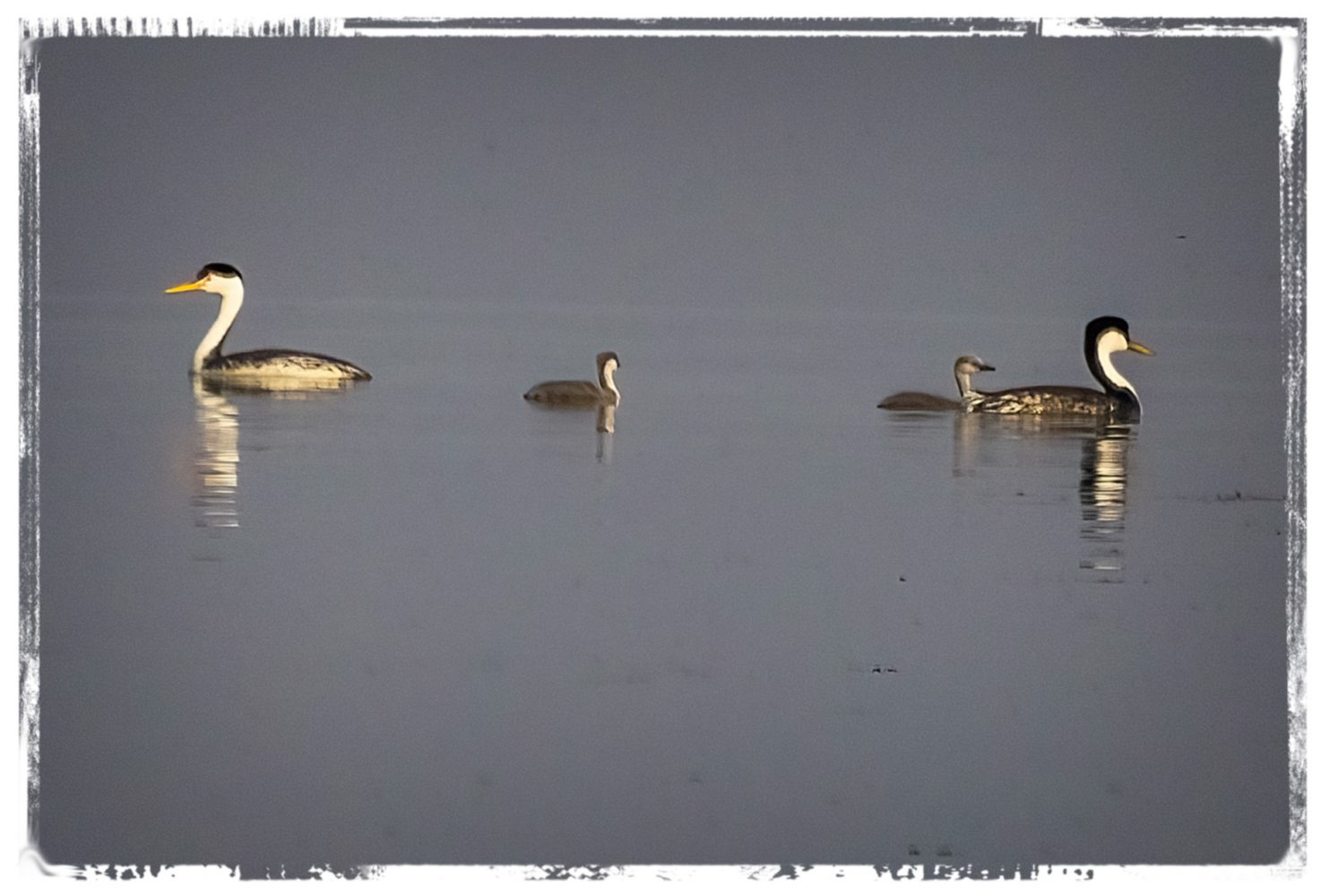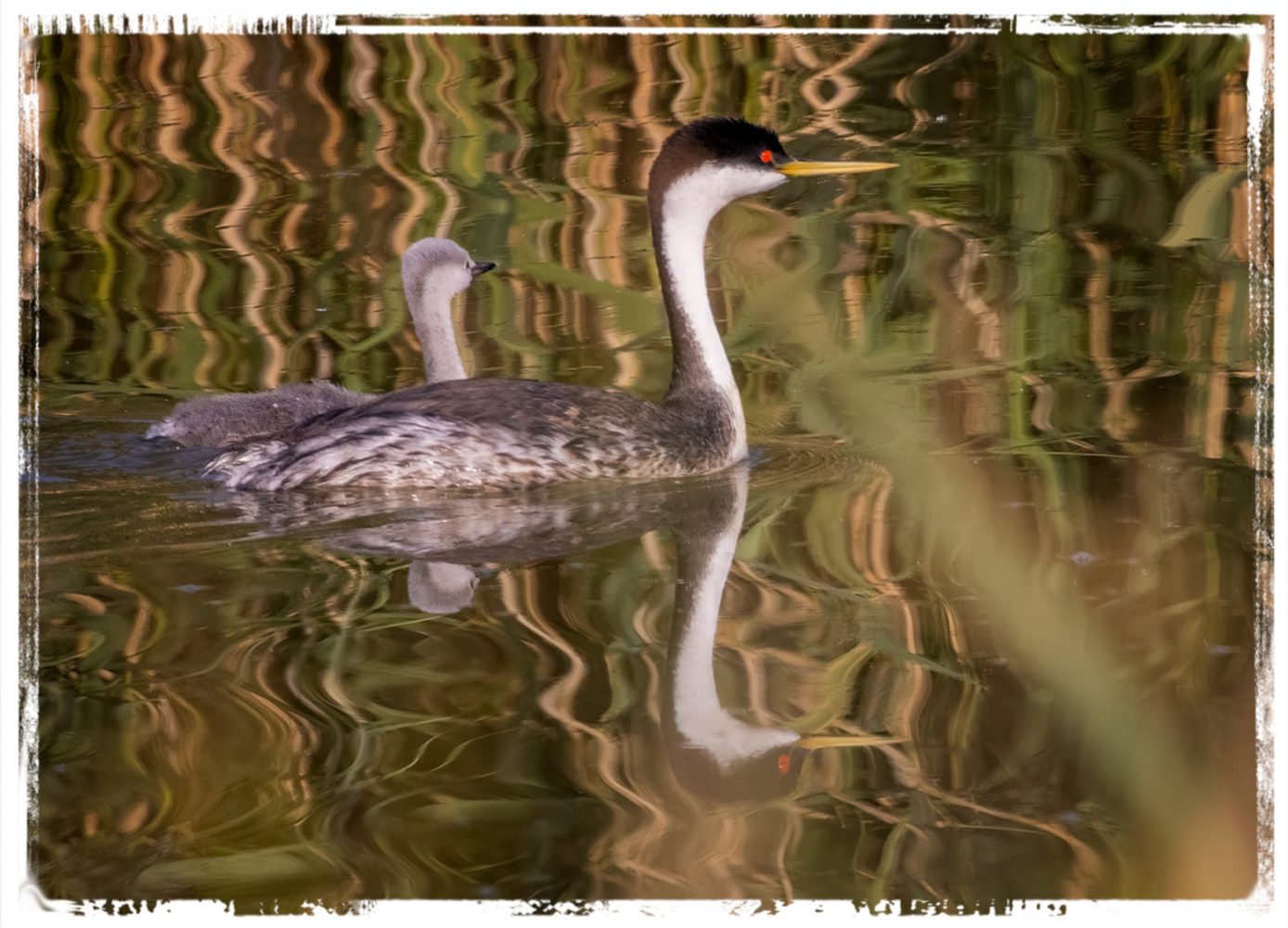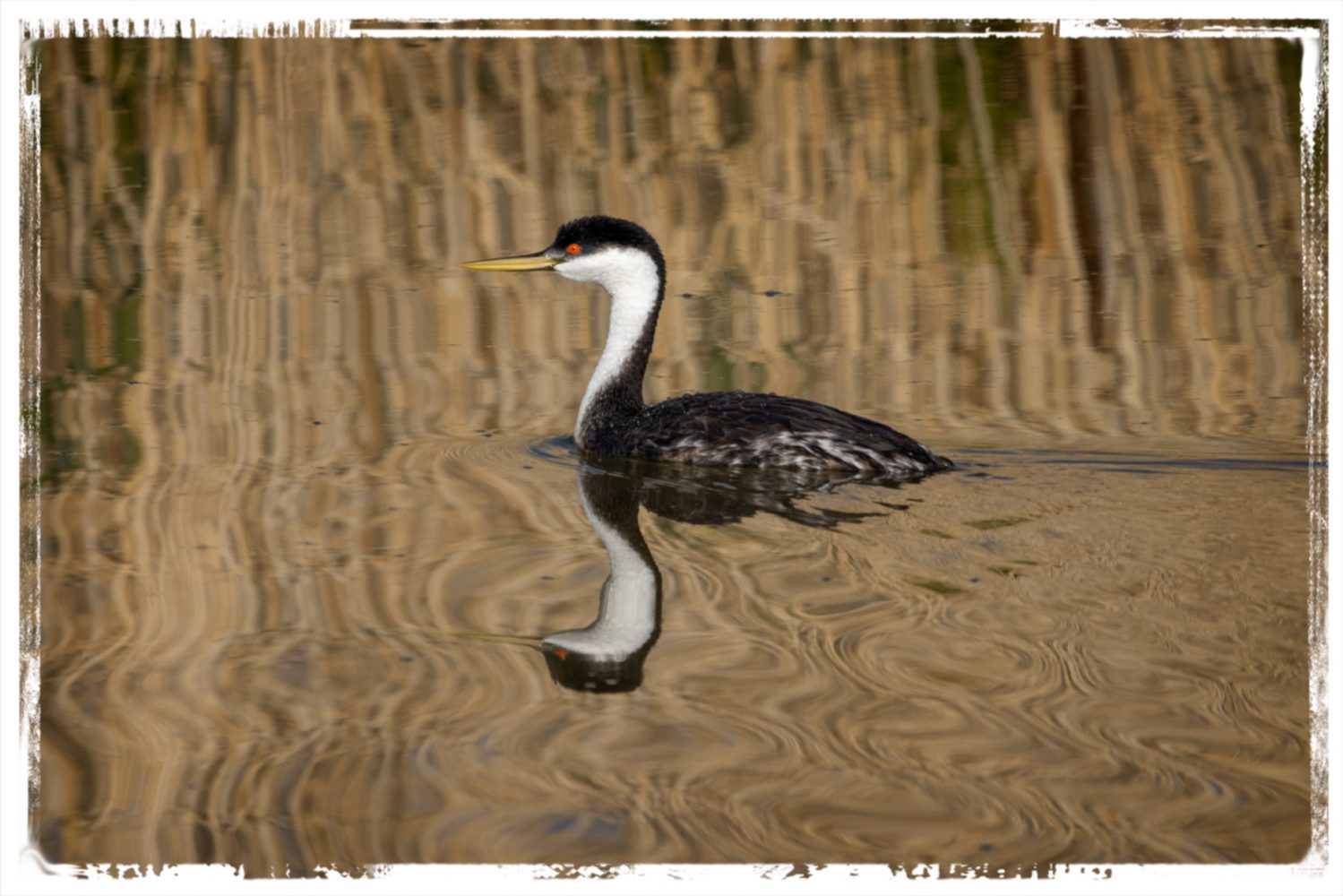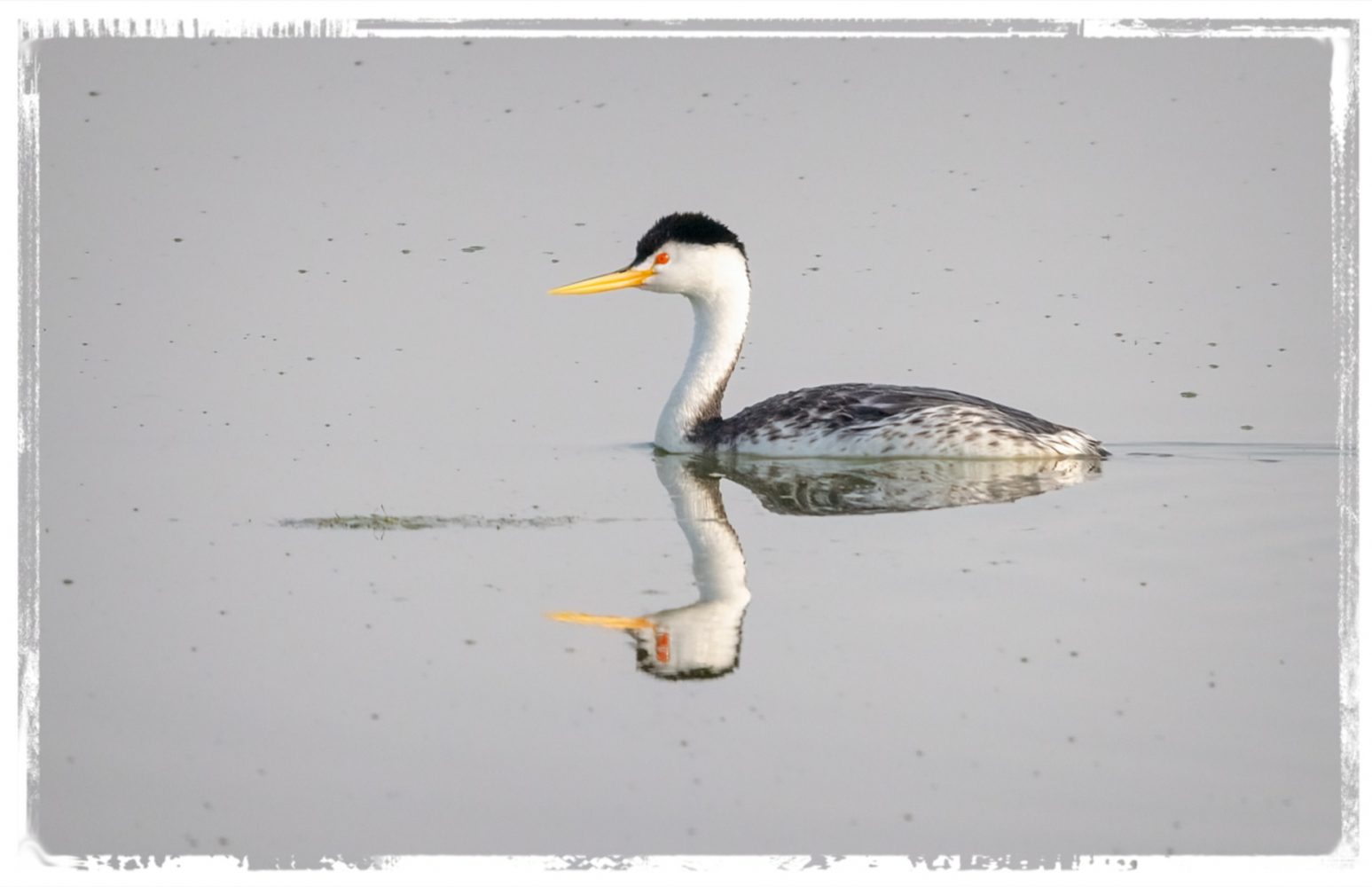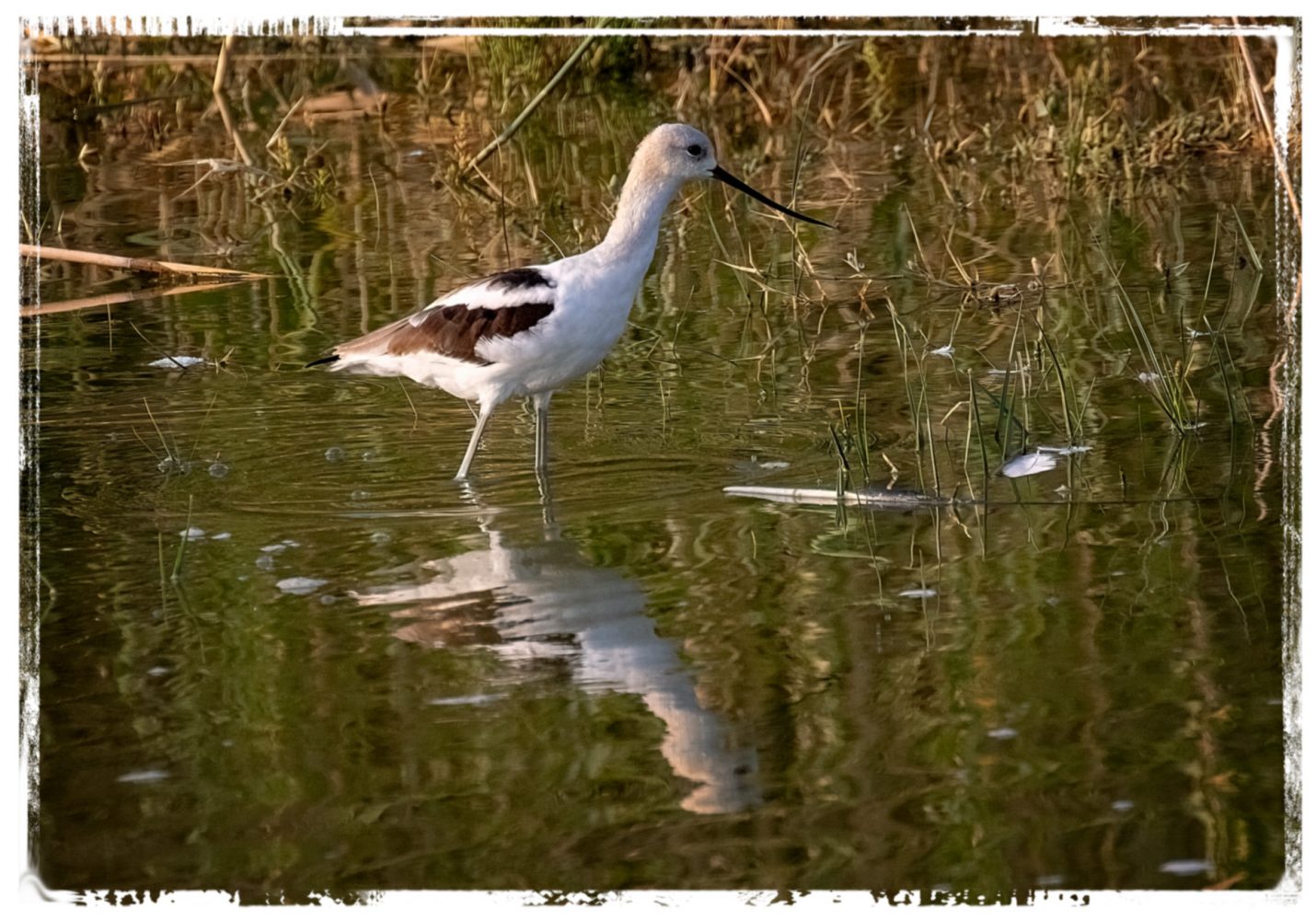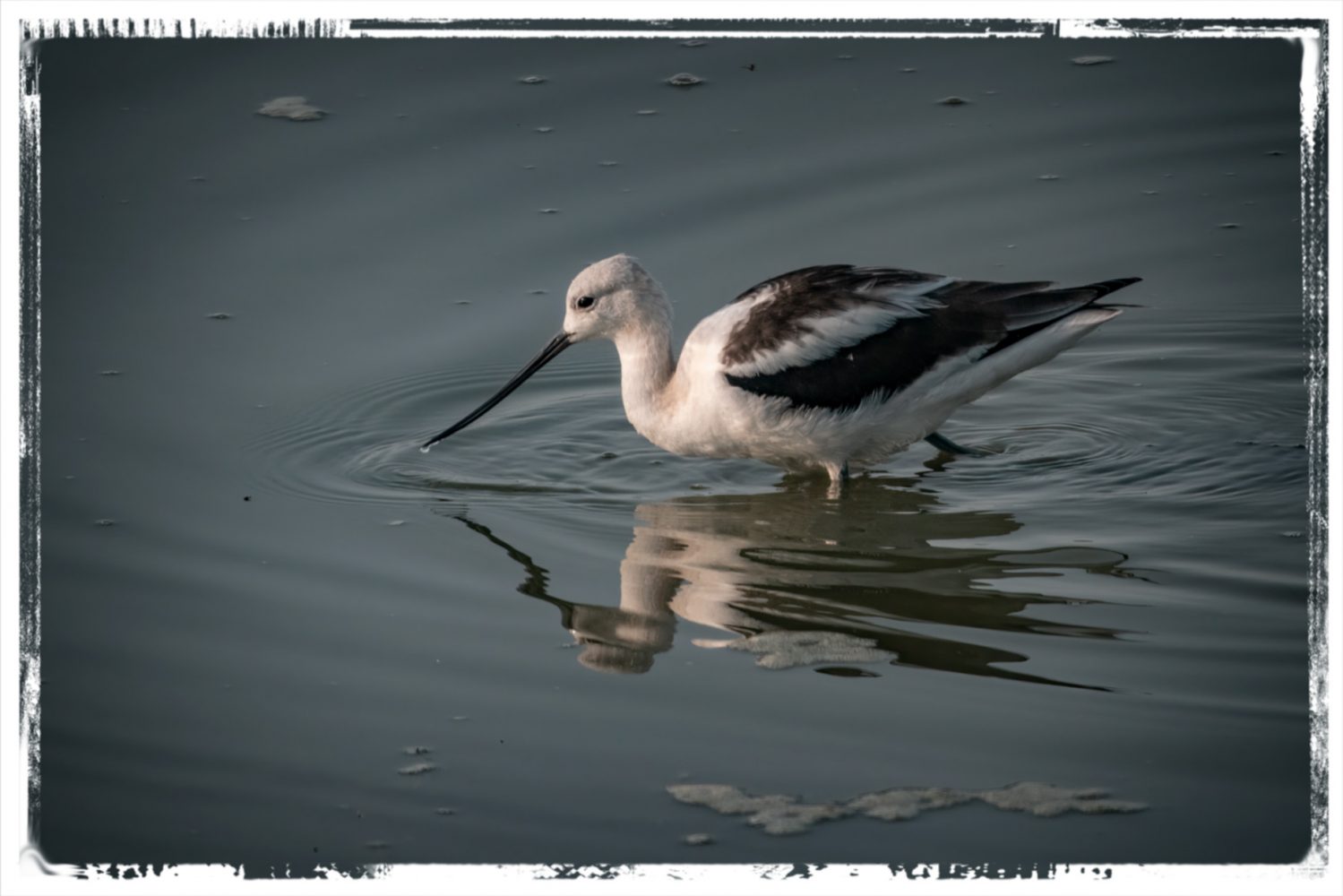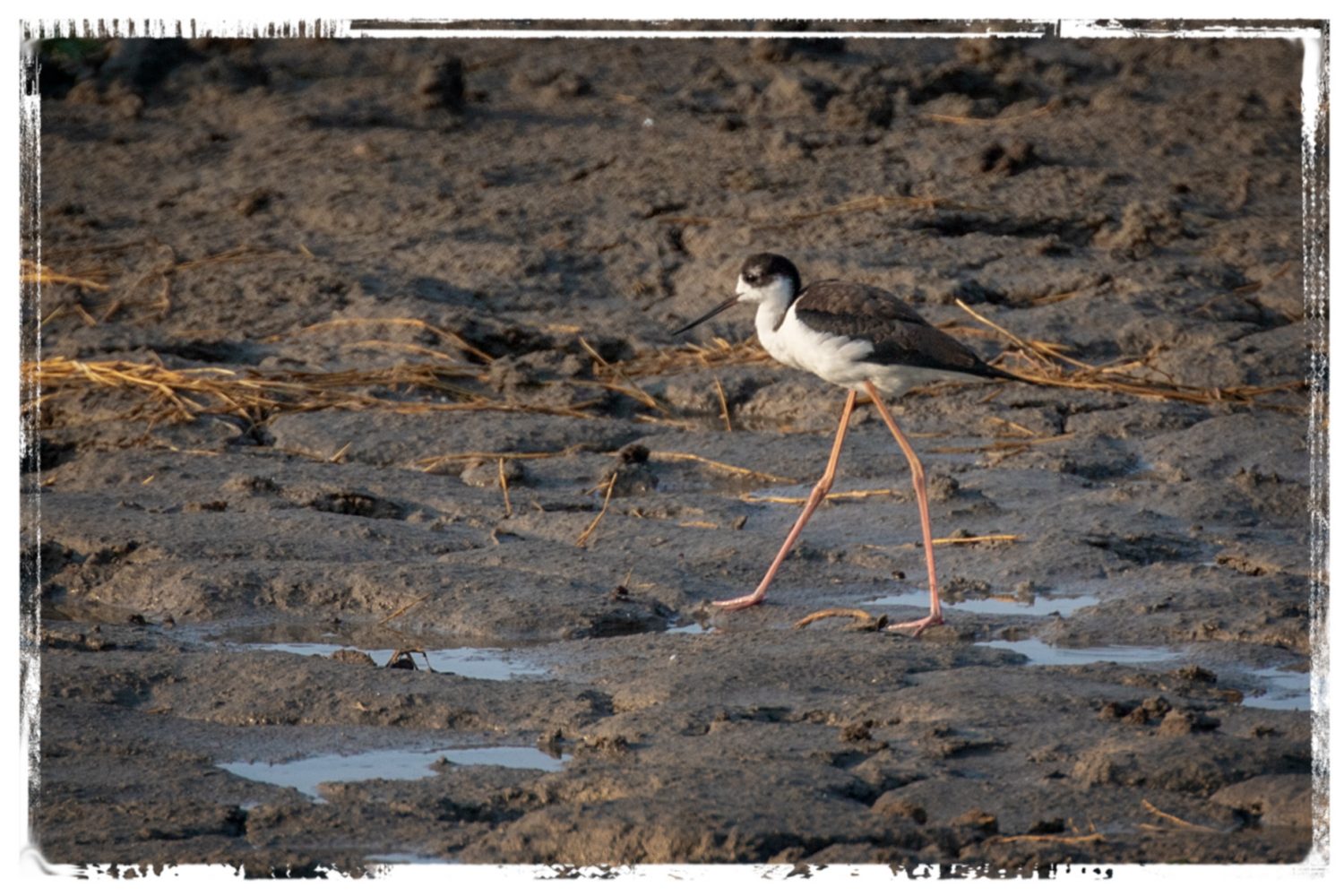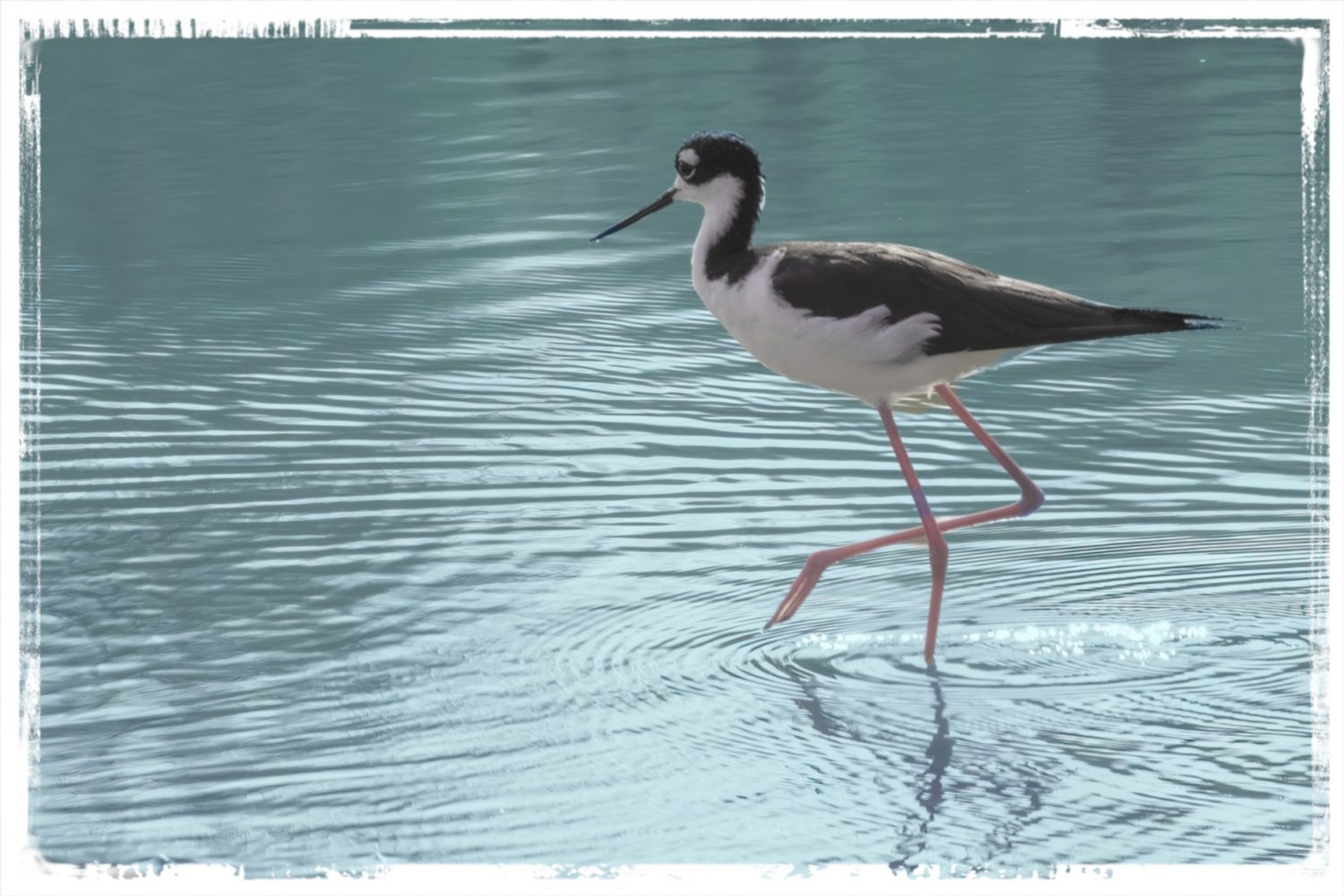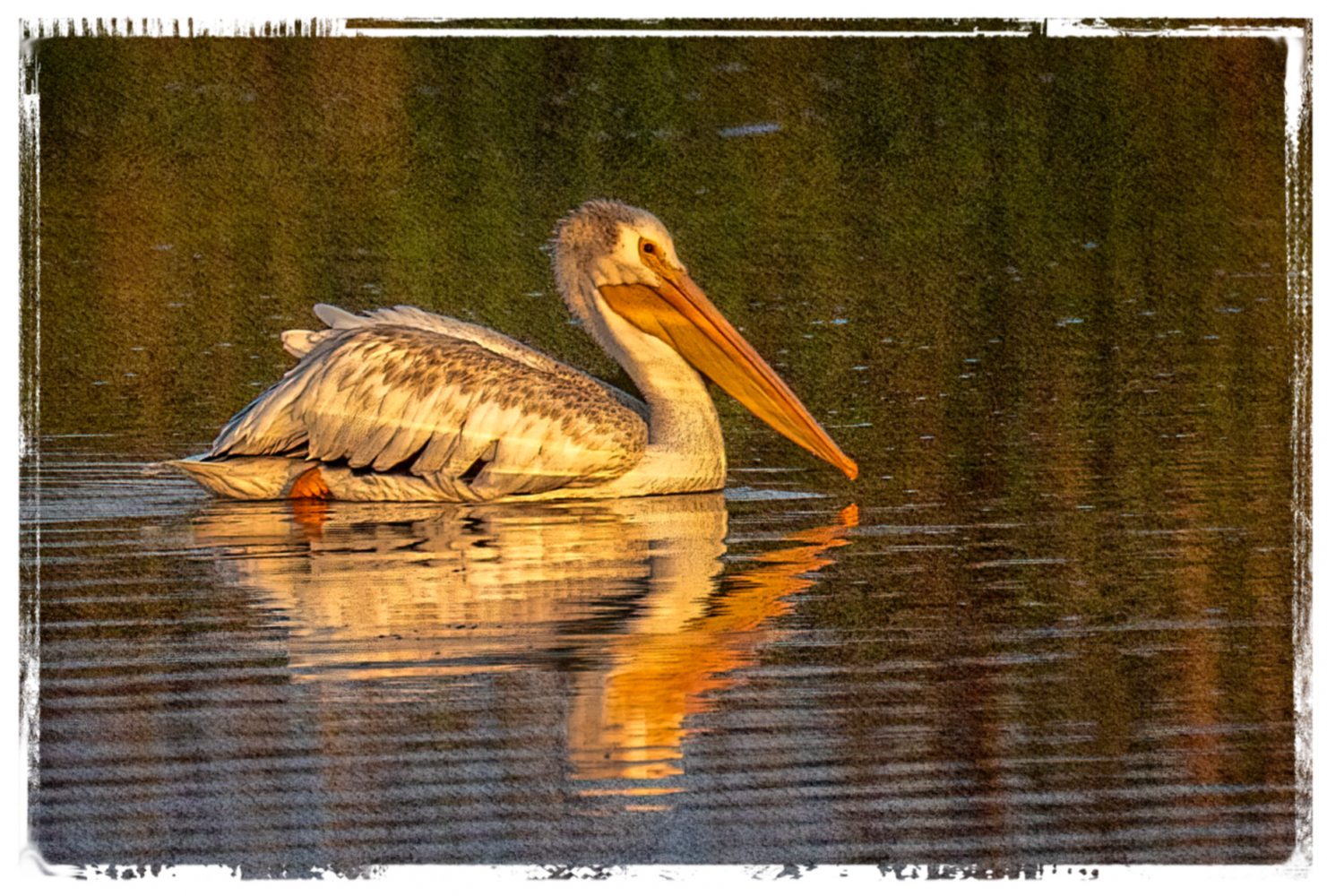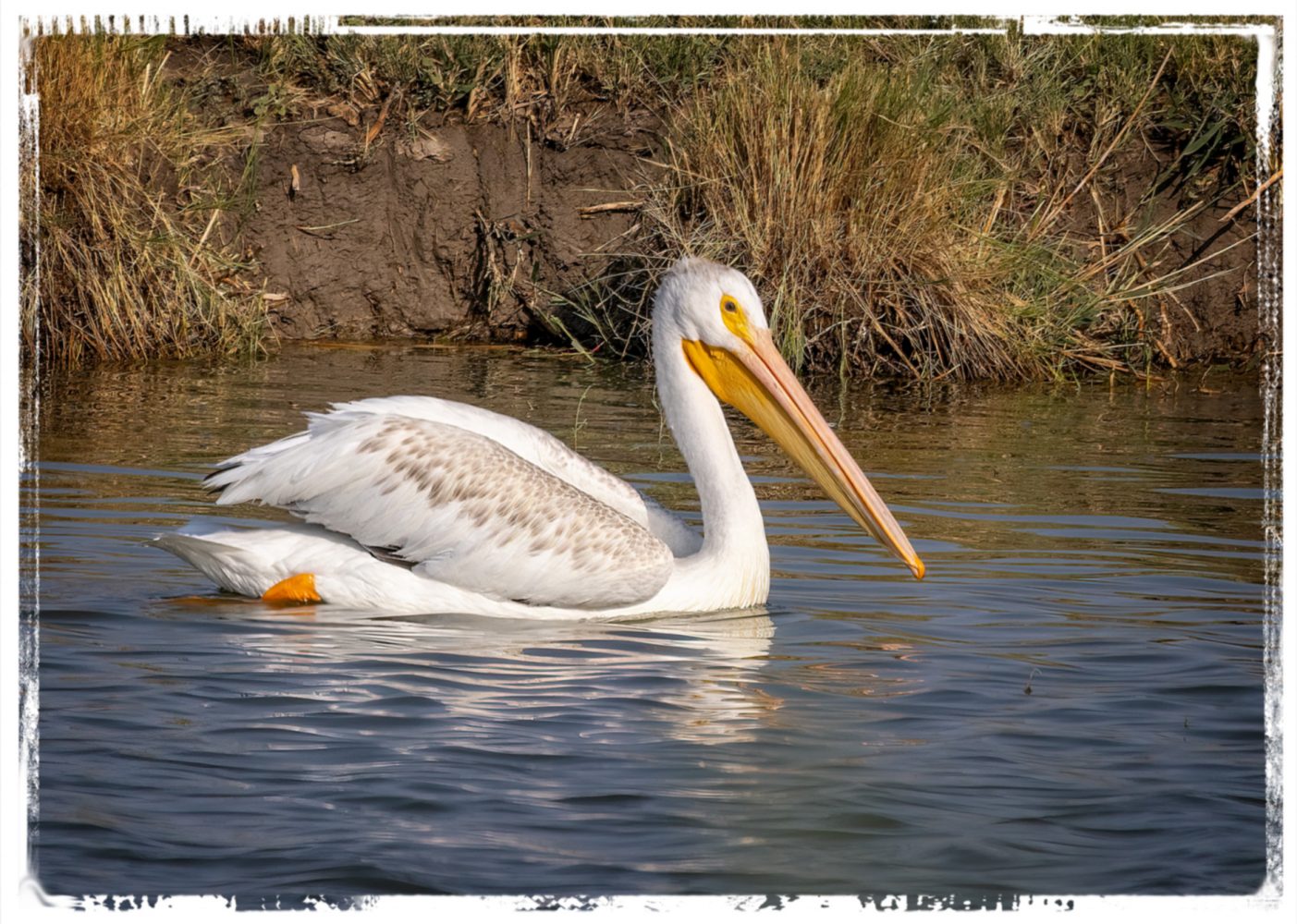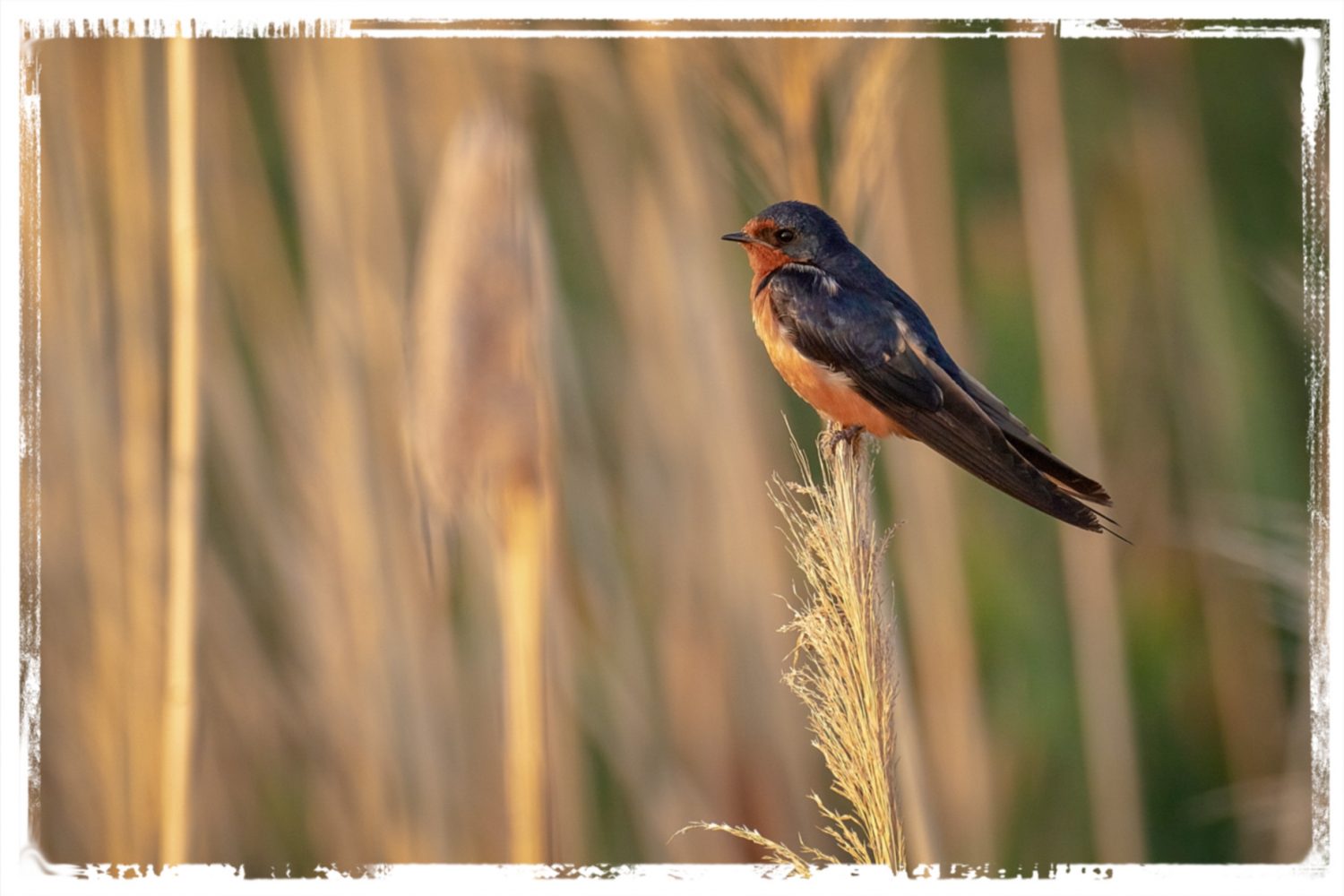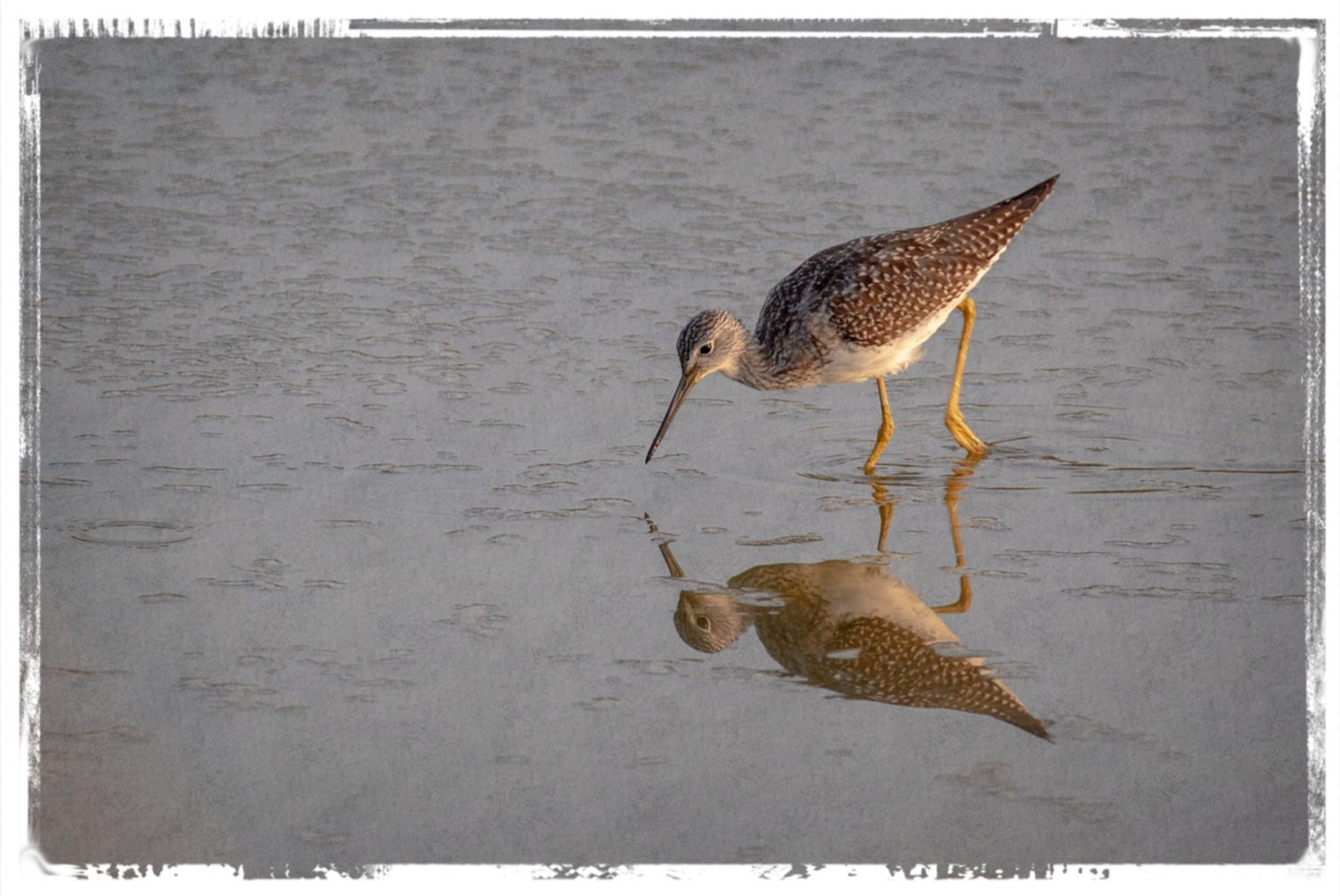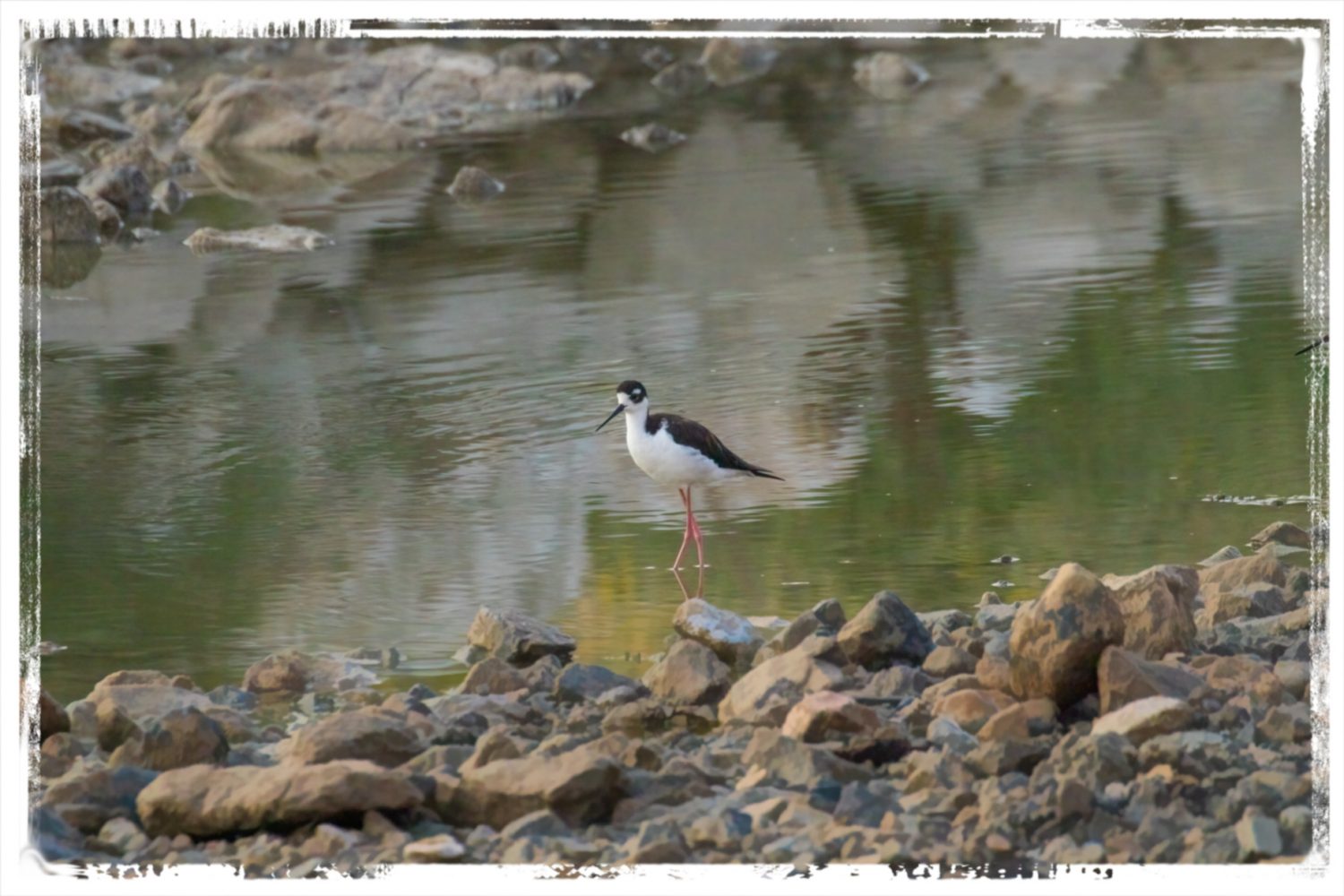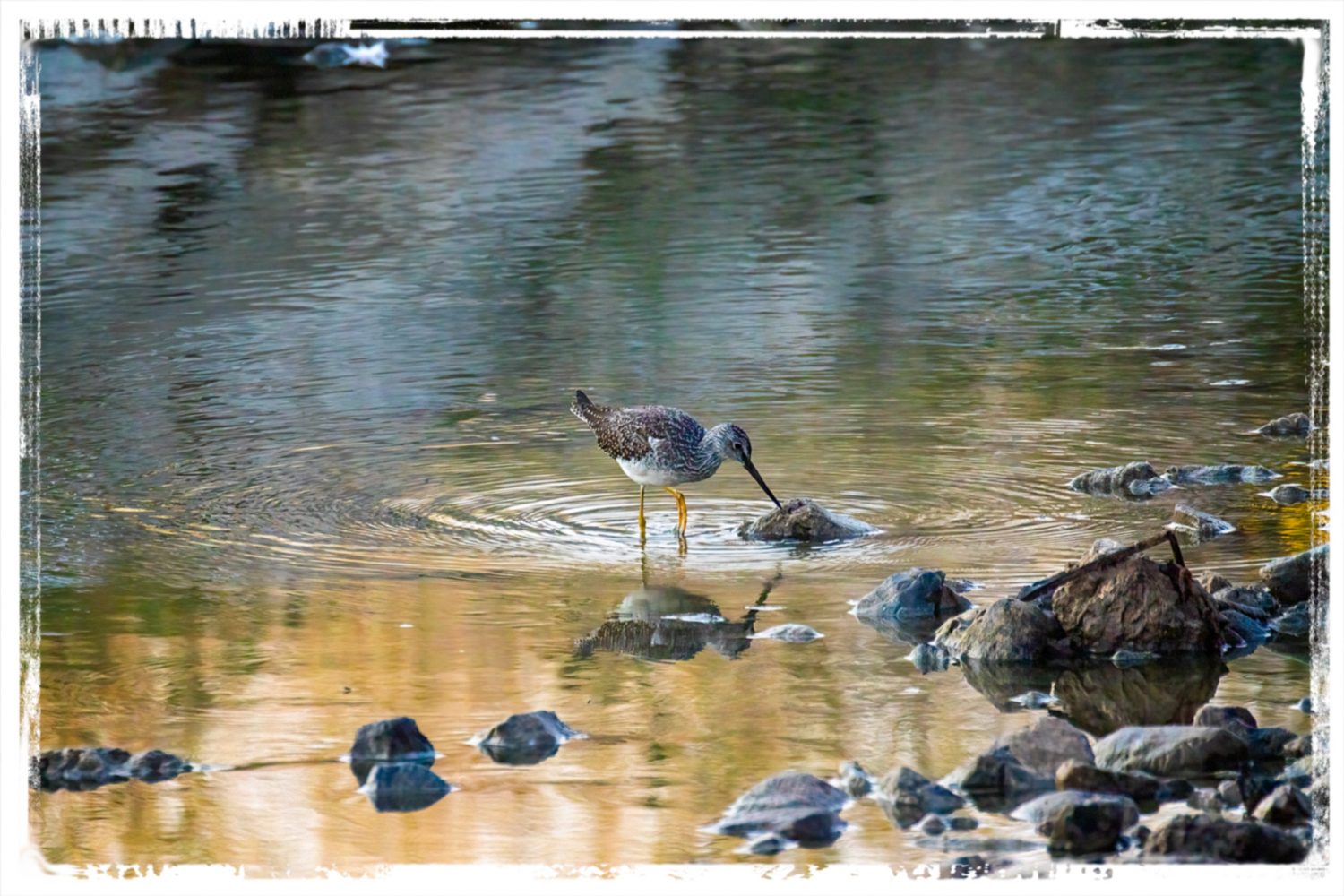We just returned from our long-awaited trip to visit the Websters in Broomfield, CO, and Paul in Santa Rosa. After a very long day of travel on our way to Colorado, we stayed overnight in Ogden, Utah, and squeezed in a visit to the Bear River Migratory Bird Refuge early the next morning before heading out to Broomfield. We’ve never visited Bear River this time of year, so we didn’t know what to expect. We were pleased to see the same old gang of Pelicans at the beginning of the drive-through tour, just where they have been on all our previous trips.
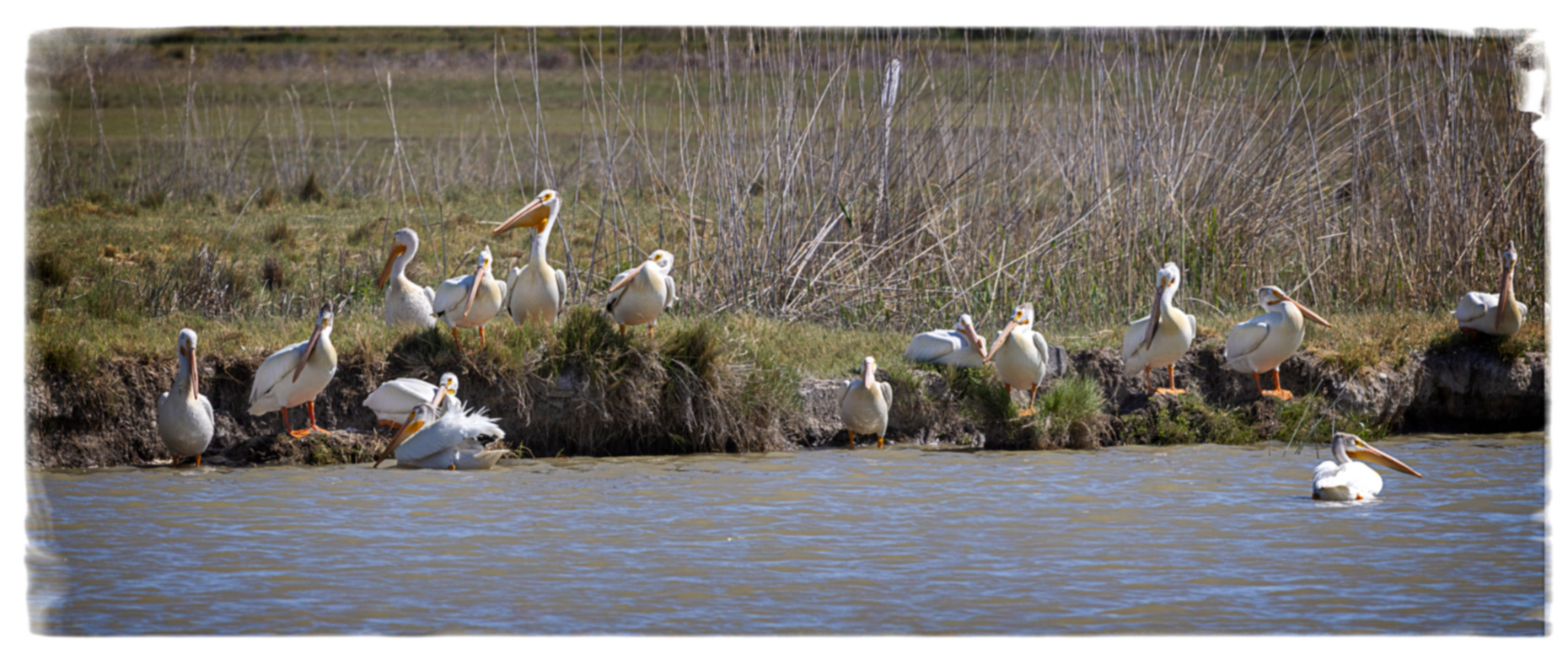
After getting this close-up,
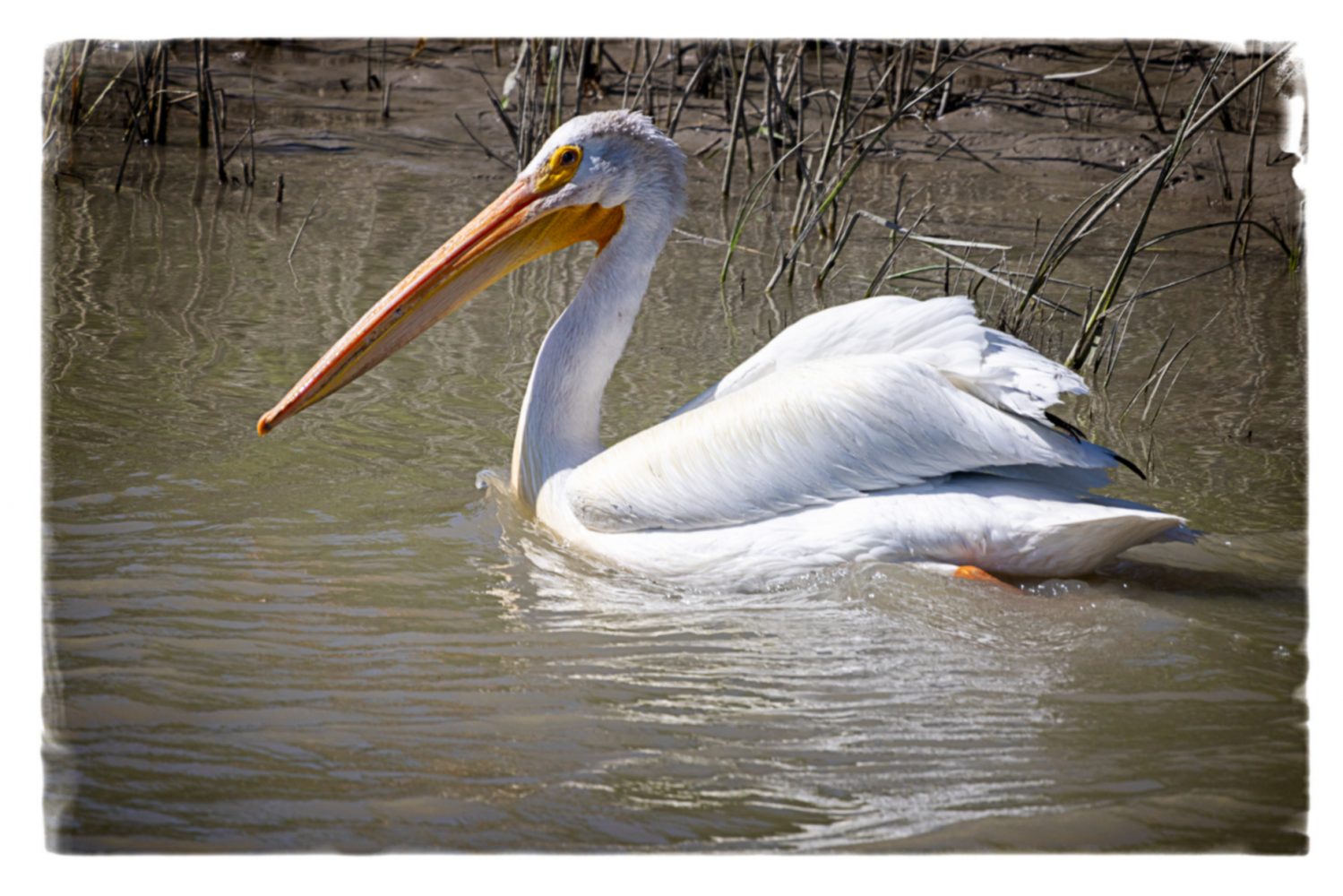
we probably didn’t need to bother to take another shot of Pelicans because we couldn’t get a better shot, but we took a lot more as it turned out. It took me quite a while to narrow down to just five shots.
Since we rarely see White Pelicans west of the Cascades, it was delightful to see them throughout the Bear River refuge. Small flocks would occasionally fly overhead,
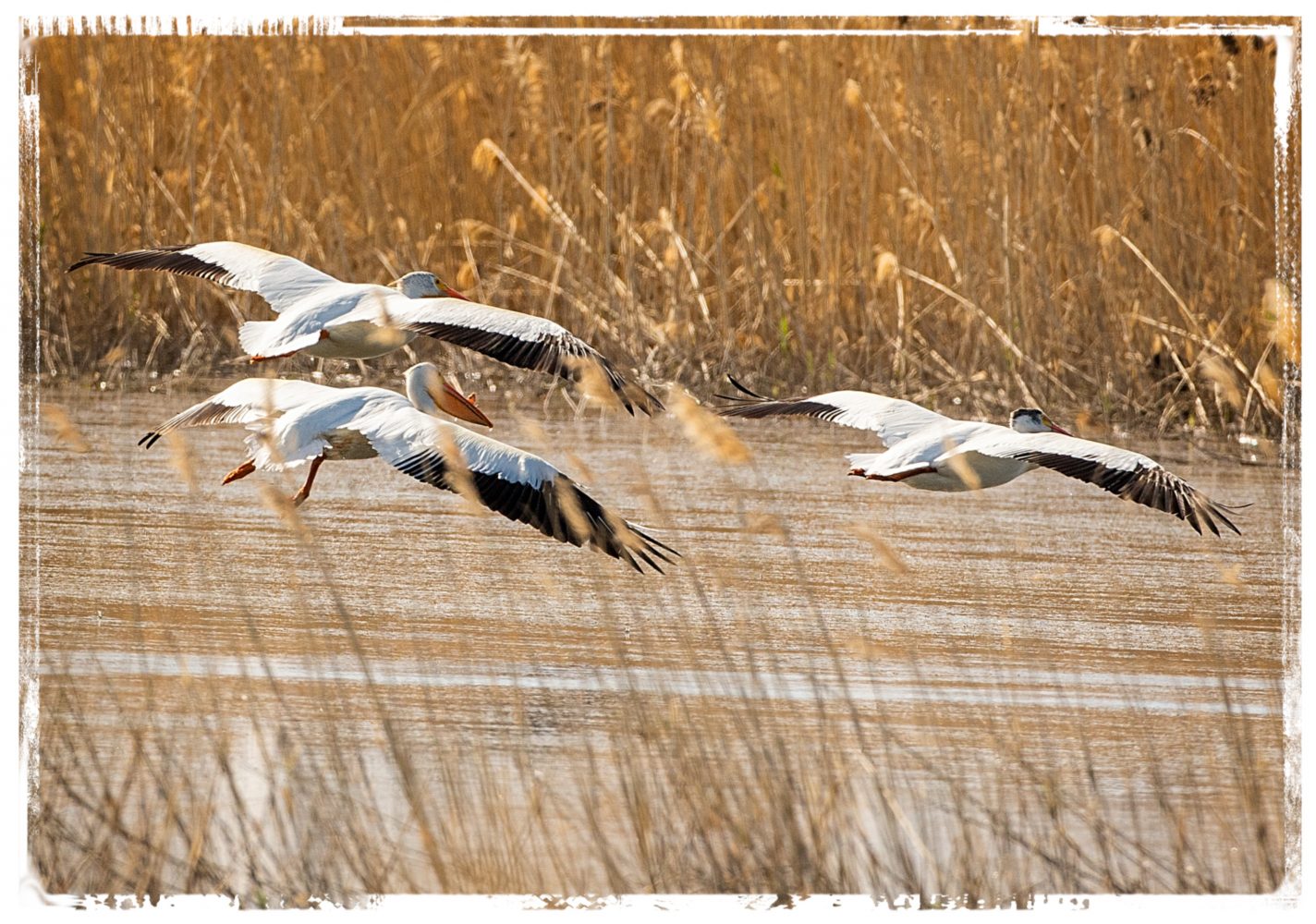
but, more often than not, we would just see small groups floating quietly on the ponds.
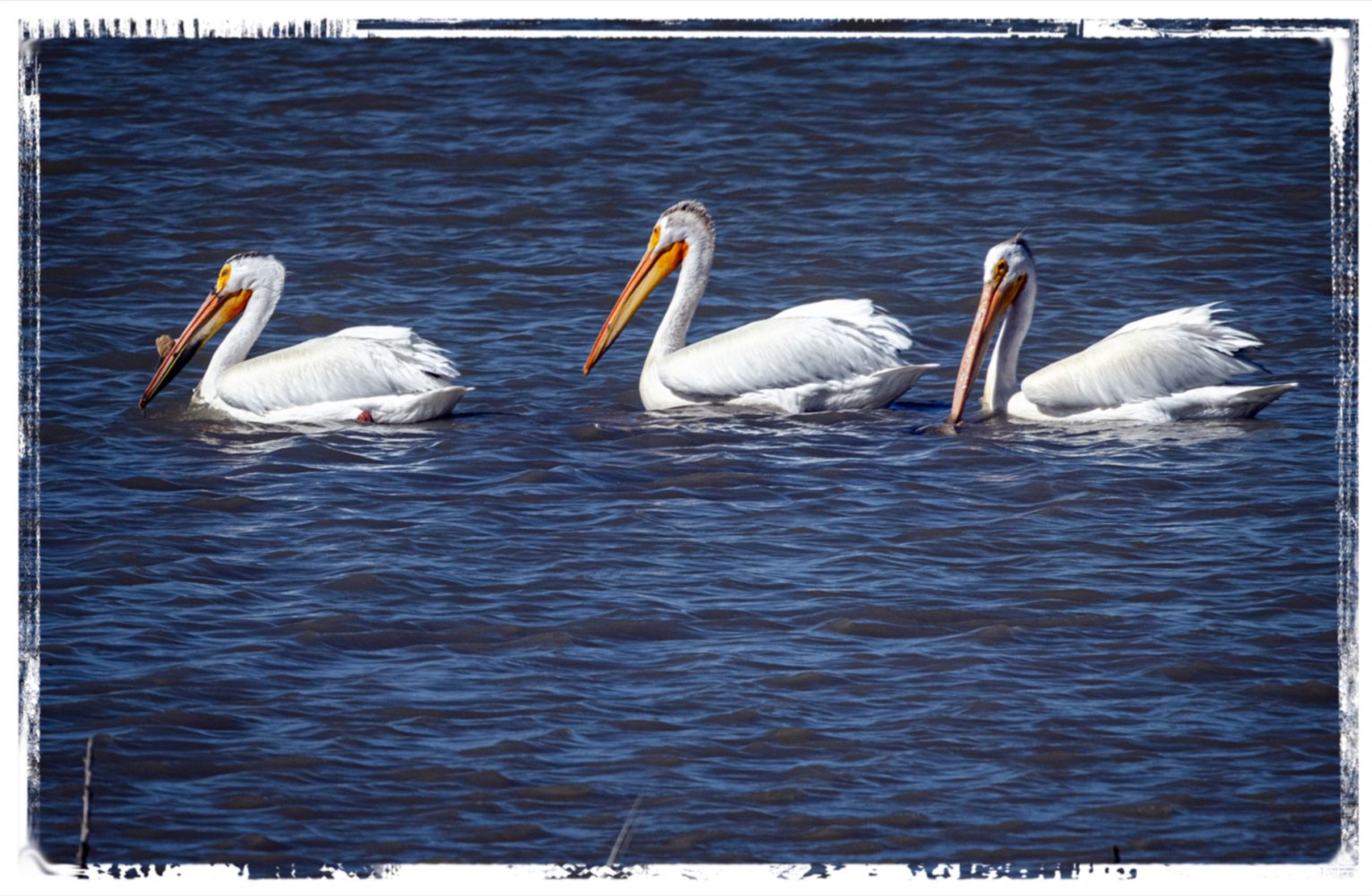
Technically, this last shot isn’t very good because it’s so blurry that even Photoshop and Topaz can’t render it sharply, but I liked it because it revealed just how big a pelican’s mouth is.
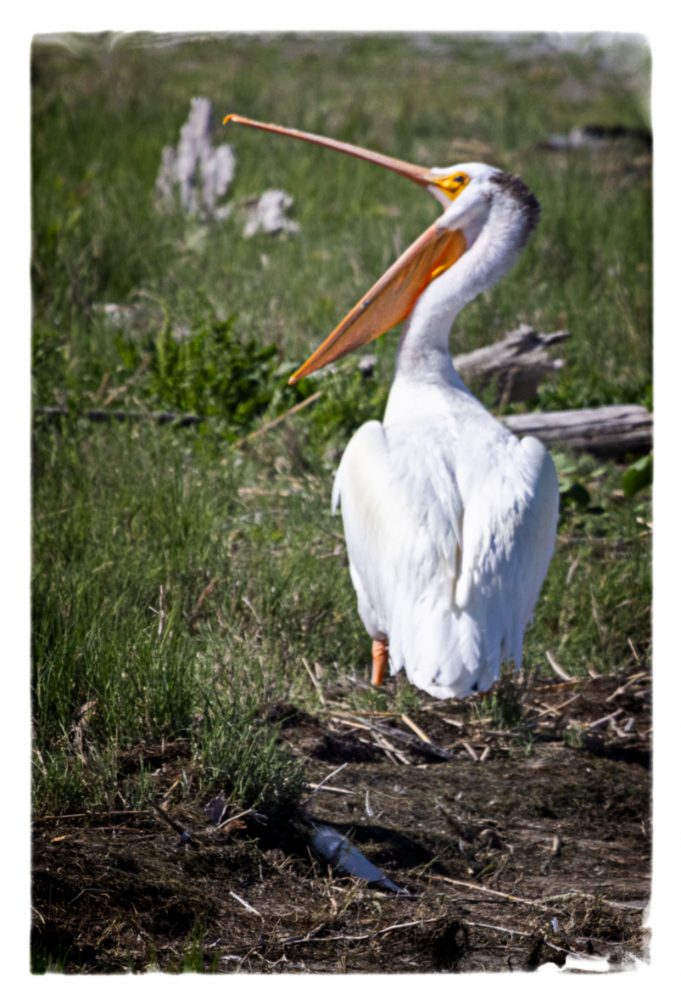
Though we don’t go to Bear River specifically to see White Pelicans (I, at least, go to see the American Avocets), seeing the pelicans enhances the experience.

